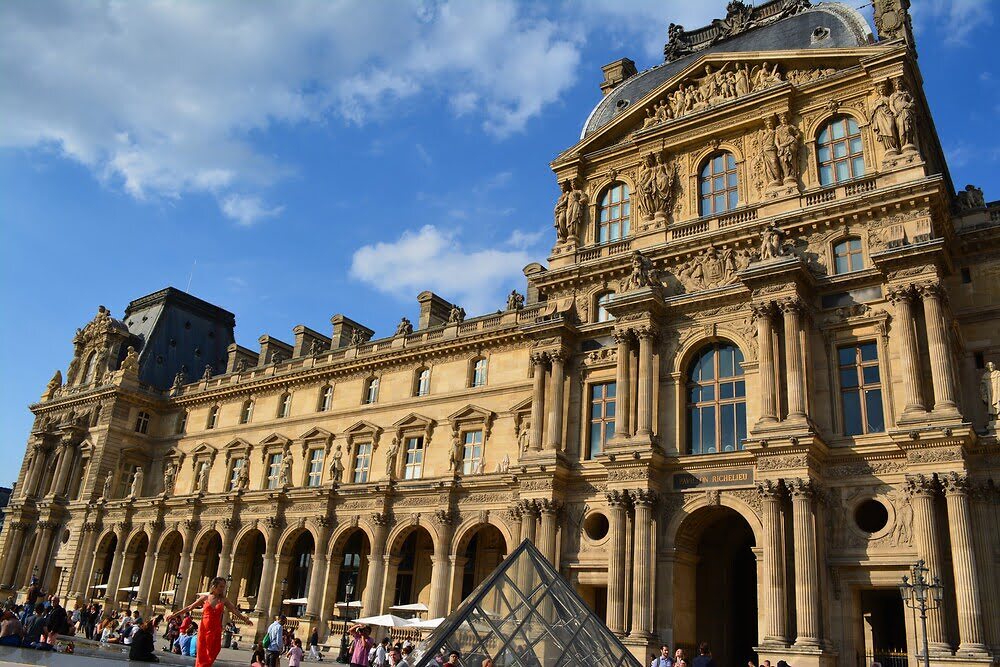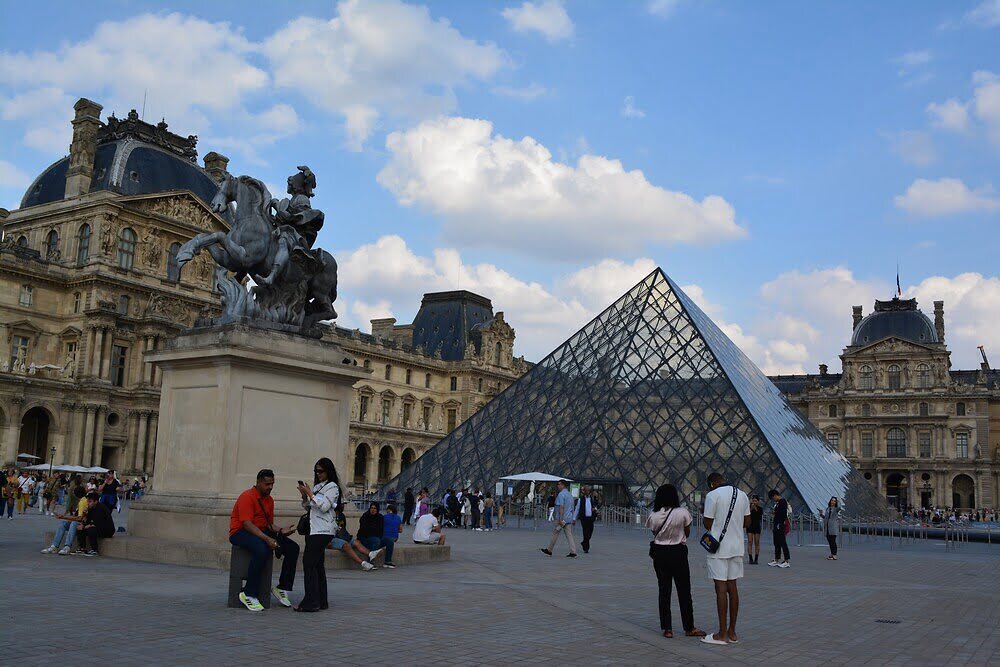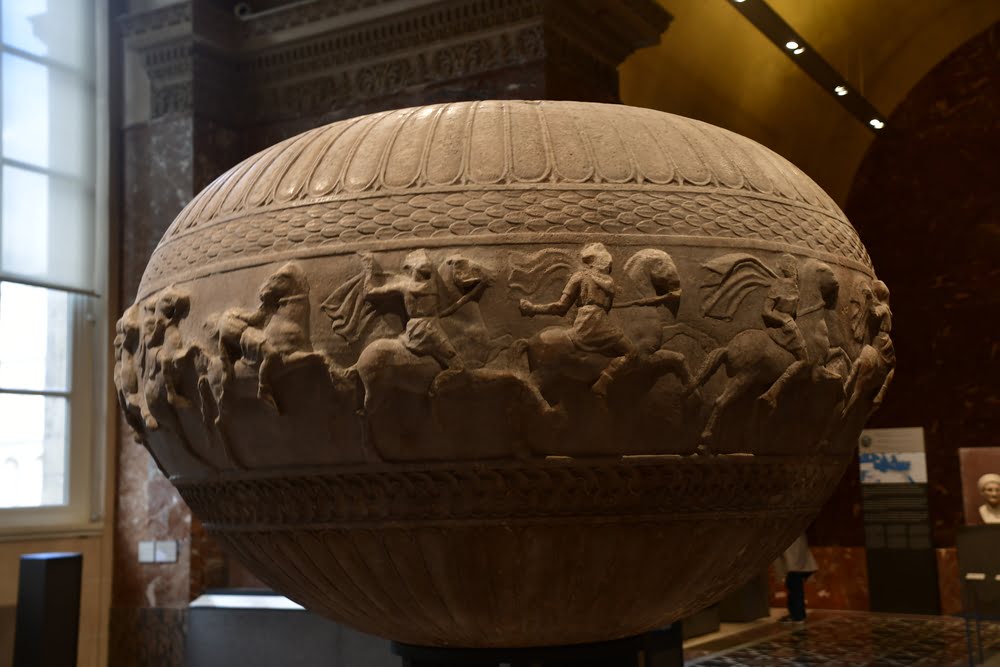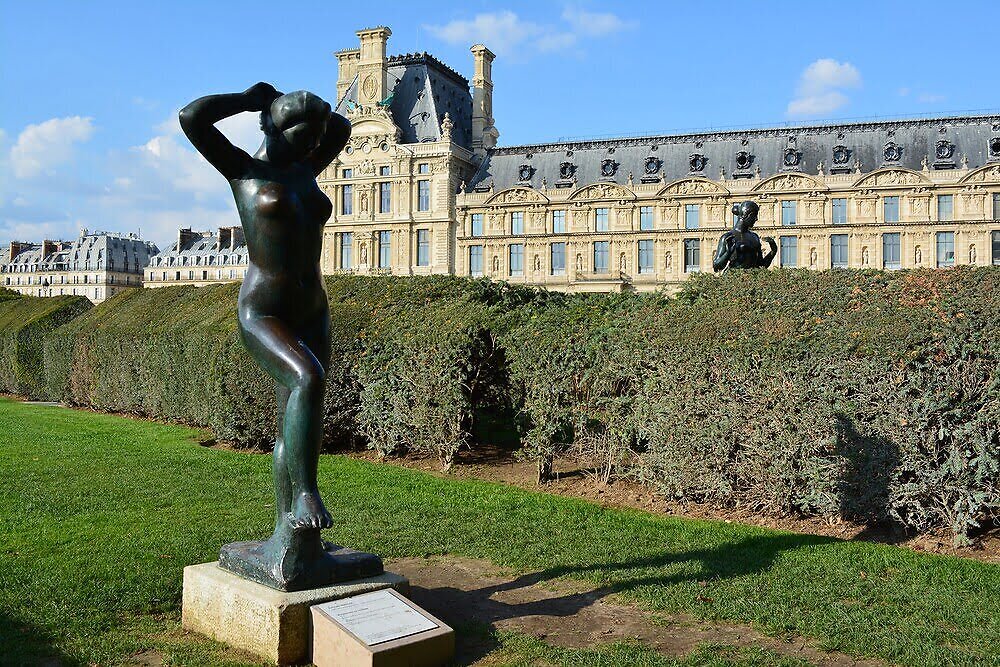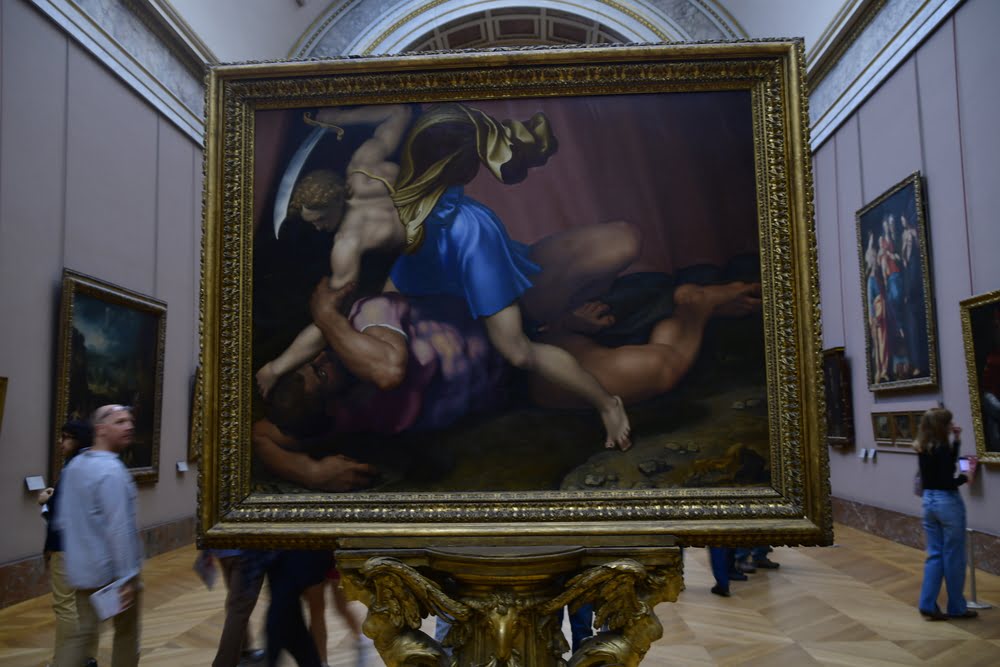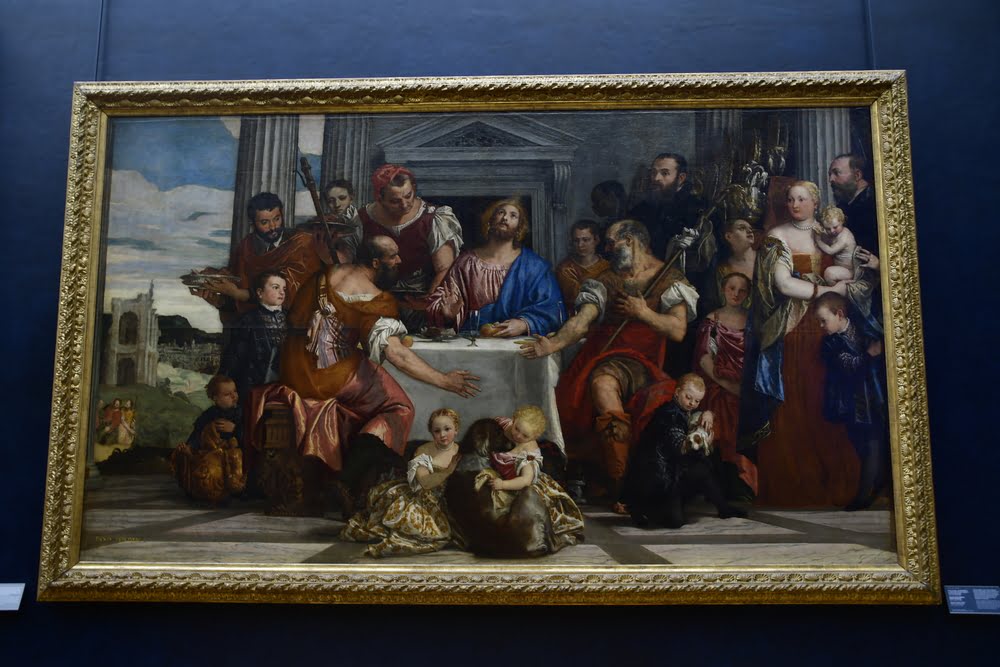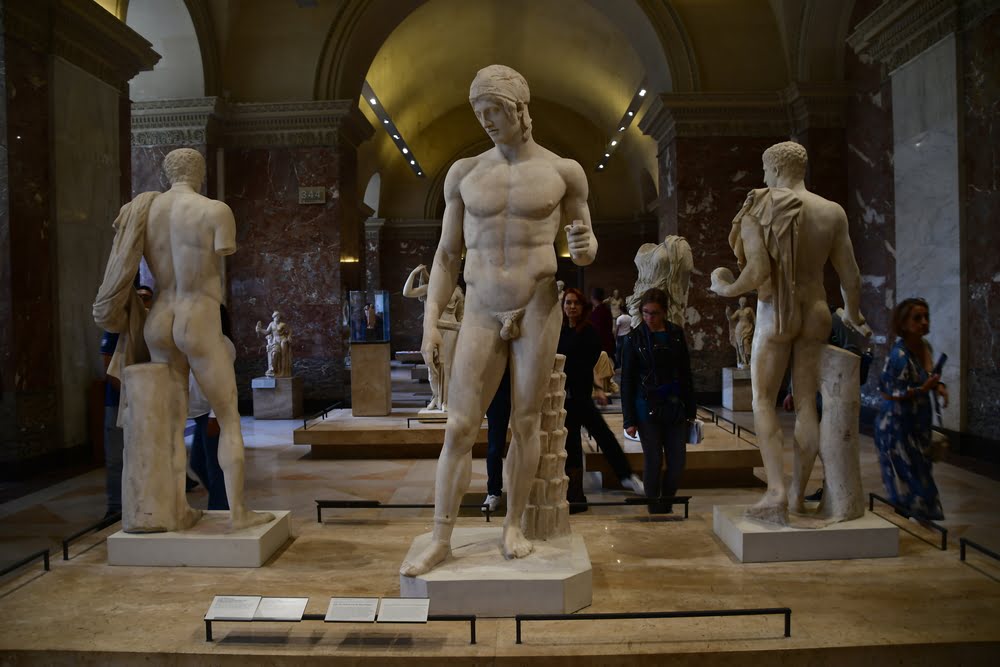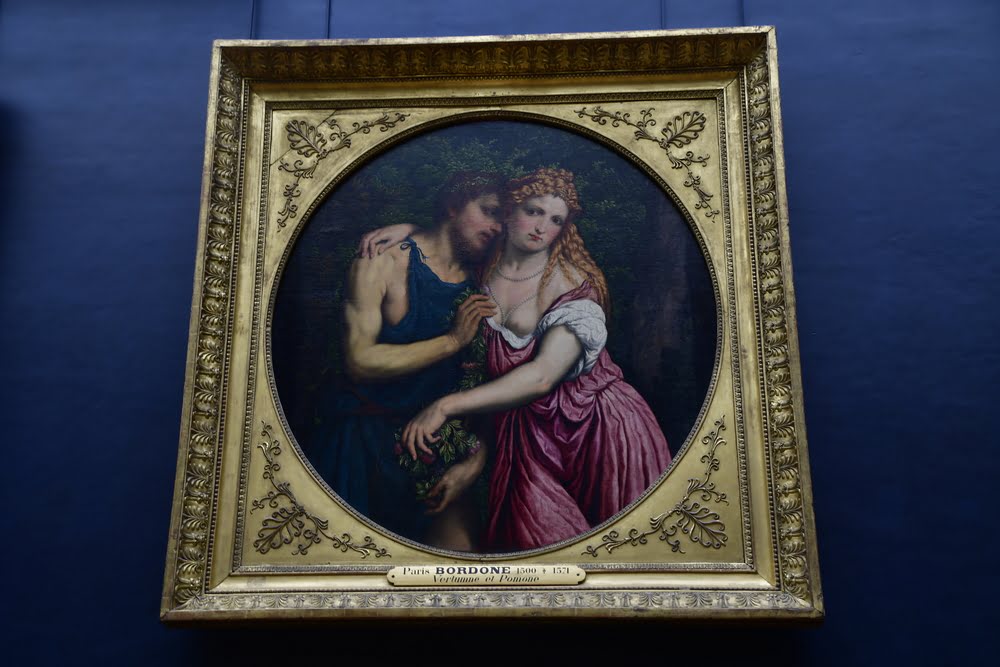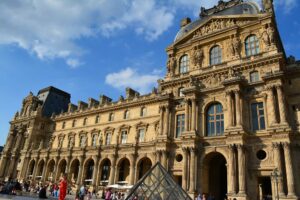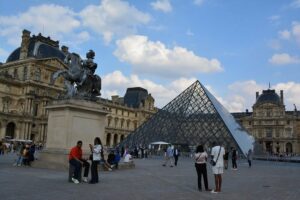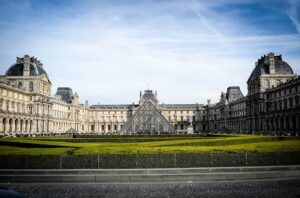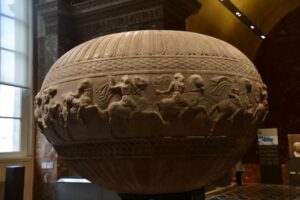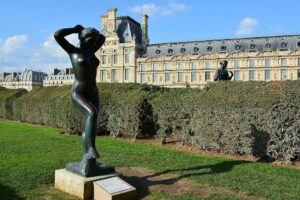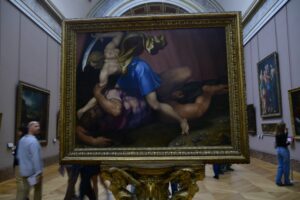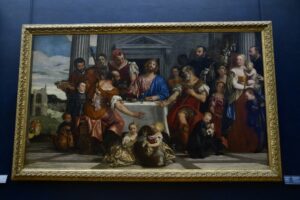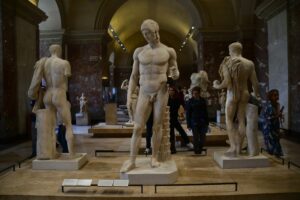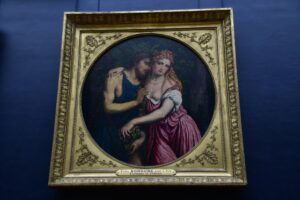- Monuments
- Museums
- Paris Hotels
- Hotels by Category
- Hotels by Districts
- Champs Elysees Hotel
- Montmartre Hotel
- Saint Germain des Prés Hotel
- Montparnasse Hotel
- Porte de Versailles Hotel
- Republique – North Train Station Hotel
- Place de la Nation Hotel
- Latin Quarter Hotel
- Opera Garnier Hotel
- Marais – Bastille Hotel
- Gare de Lyon Hotel
- Gare Saint-Lazare Hotel
- Hotel Place d’Italie
- Other Hotels
- Hotels by Category
- Shopping
- Districts
- Airports
- Paris map
- News
- Directory
- Contact us
Louvre Museum
- Profile
- prev
- next
- prev
- next
-
The Louvre was built by Philippe Auguste in 1204 and was originally the royal château and later transformed by Charles V between 1364 and 1380 and was entirely rebuilt from the time of François I to the 19th century.
History
Once upon a time a palace of French kings and princes, the Louvre is today the Palace of Arts and holds one of the richest museums in the world. Its collection, which ranges from Egyptian art of 5000 BC to nineteenth-century work, is divided into seven departments :
- Oriental and Islamic Antiquities
- Egyptian Antiques
- Greek, Roman and Etruscan Antiques
- Painting
- Sculpture
- Decorative Arts
- Graphic Arts
Mitterand’s contribution to the Louvre
In 1981 President Miterrand initiated a rehabilitation project called Le Grand Louvre. The visible part of this iceberg like building-site, being the Glass Pyramid designed by famous architect Ieoh Ming Pei, opens the outstanding perspective toward the Grande Arche de la Défense with the Arc de Triomphe in the middle. The Pyramid gives now access to the main entrance, letting a delightful golden light filter through the glass surface illuminating the floor below.
What’s new
The huge renovation of Le Grand Louvre which started in 1983 leads to an increase of 22 000 square meters. The basement is now occupied by the remains of the medieval castle originally a big keep part of the defensive wall built under Philippe August in 1190 which have been excavated and displayed below the Cour Carrée. Under the glass pyramid leading to the main entrance of the Hall Napoléon starts the shopping gallery leading to several restaurants and cafeterias of the Galerie du Carrousel under the reversed pyramid.
The Aile Richelieu is fully accessible to wheel-chair visitors. Temporary exhibits are displayed below the pyramid in the Hall Napoléon and in Aile Richelieu and Aile Sully.
To help you find your way, the three wings are colour coded. Each level is also colour coded and divided into ten sections and each room is numbered. In 1993 the Museum celebrated the bicentenary of its opening, and an extension to the Richelieu Wing opened to celebrate the event. The upheaval this has caused will affect the building through the decade, so changes and closures are expected.
Inside the Louvre
This is one of the greatest art collections in the world. The core collection was formed by François 1, and added to by Henri II and Catherine de Medicis. The Old Master collection was developed by Louis XIV and important Spanish and Dutch works acquired by Louis XVI. Most painting lovers come to view the exceptional collection of European paintings which range from I400 to I900. The Grand Gallery running along the south of the building is a stupendous piece of design which showed the world what a picture gallery should look like. Pierced by large windows, its walls are hung with some of the finest works of the Italian Renaissance. On this level is also the Spanish collection and the large scale nineteenth-century French paintings. On the upper level artists from northem Europe are well represented, along with earlier paintings from the French school.
Not to be missed
After spending around 2 hours, you can become acquainted with some of the most famous paintings in the world. For example, try to interpret the enigmatic smile of Leonardo Da Vinci’s Mona Lisa, or admire the pertect proportions of the Venus of Milo (Sully wing). Michelangelo, Bellin, Donatello and Maillol are some of the great sculptors also represented here.
Carrousel du Louvre
The other major development is underground – a vast space stretching from the Hall Napoleon, the main entrance to the museum, beneath the Pyramid to beyond the Arc du Carrousel. Known as the “Espaces Carrousel du Louvre”, its central crossroads, place de la Pyramide Inversee, is fed with daylight through an inverted pyramid, a smaller model of the Pyramid. From the Hall Napoléon, shops, restaurants, exhibition spaces – and bits of the old fortress’s outer defences – make up the cold, classy and commercial “Carrousel du Louvre” gallery. Beyond are several auditoriums and conference halls, car and bus parking areas and new premises for the Louvre’s research department, unique in the world for having its own particle accelerator to examine subatomic bits of works of art and archeological finds.
Before this subterranean complex was dug out, archeologists discovered Stone Age tools, remnants of an Iron Age farm growing lentils, peas, fruit and cereals, a house dating from 300 BC, a fourteenth-century manor house complete with wall-paintings and garden, and Catherine de Medicis’ unfinished Tuileries.
Palace
There will be direct access to the “Espace Carrousel du Louvre” from the metro and from place du Carrousel. The virtue of the new parking spaces will be to clear rue du Rivoli and place du Palais- Royal of the lines of coaches disgorging their passengers into the Louvre.
New Projects
New galleries are being planned in the coming years for Italian painting and sculpture, for the vast collections of Egyptian and Greek art, tor works by the Etruscans and sculpture trom the northern countries. With its seven sections, the Musee du Louvre is colossal in size, and owns an extroardinary number of works of art. About 28,000 are on display, which is a more 5% or so of the Louvre’s treasures, most of which are being kept in storage in the cellars.
Surroundings
After crossing the Place du Carrousel, take a look at the new Louvre built by Percier and Fontaine under the first Empire, and then by Visconti and Lefuel under the second. It is here, in Napoleon’s Courtyard, that we see the most famous sign of the great Louvre’s redevelopment, the pyramid by the Chinese-American architect leoh Ming Pei. Placed in the center of the courtyard, this object 21.65 m high with a base 35.40 m square, employs the most modern techniques for the use of steel, glass and aluminium. Its proportions were calculated in accordance with the Golden Number laws. The pyramid gives acces to the new spaces in the museum, which have been entirely rearranged starting from this single, central entrance. We finally reach the old Louvre via the famous Cour Carree, which possesses remarkable architectural elements; the facade by Pierre Lescot; works by Lemercier including the Clock Pavilion.
Organized Tours
There are several tours possible depending on the time you have available. You can wander about in leisurly fashion through the art of various countries and centuries : you can make a closer examination of a specific artistic style that interests you in particular, or take one of the official tours that are ottered in various languages. A multilingual brochure as well as a plan of the museum are available at the entrance tree of charge. And before leaving the neigborhood, take a look at the two other special museums. The first is the Musee des Arts Decoratifs ; it displays art-works and furniture from the Middle Ages to the present. A little further, is the Musee des Arts à la Mode, with costumes and cloth from the 16th to the 20th centuries.
Location : Palais du Louvre – Cours Napoléon 75001 Paris
Phone : 01 30 83 78 00
How to get there :
- Metro station: Palais-Royal musée du Louvre (line 1).
- Buses number: 21, 24, 27, 39, 48, 67, 68, 69, 72, 75, 77, 81,85, 95 stop Louvre Museum.
Opening :
- Thursday to Sunday : 9am-6 pm
- Monday and Wednesday : 9am-l0 pm
- Closed Tuesday
- Limited display and temporary exhibitions in Hall Napoleon Wed to Mon 9am-10pm.
Official website : https://www.louvre.fr
Nearby hotels
-
14 Rue Stanislas, 75006 Paris, France
-
32 Rue des Saints-Pères, 75007 Paris, France
-
14 Rue de Saint-Simon, 75007 Paris, France
-
Louvre, Paris, France

